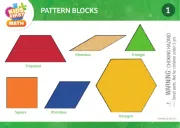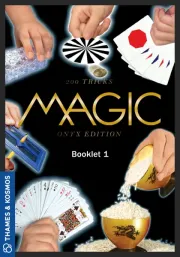Thames & Kosmos I Dig it Dinos! - Dino Egg Bruksanvisning
Thames & Kosmos
ej kategoriserat
I Dig it Dinos! - Dino Egg
Läs gratis den bruksanvisning för Thames & Kosmos I Dig it Dinos! - Dino Egg (2 sidor) i kategorin ej kategoriserat. Guiden har ansetts hjälpsam av 20 personer och har ett genomsnittsbetyg på 5.0 stjärnor baserat på 10.5 recensioner. Har du en fråga om Thames & Kosmos I Dig it Dinos! - Dino Egg eller vill du ställa frågor till andra användare av produkten? Ställ en fråga
Sida 1/2

E X C AVAT I O N K I T
Excavate a dinosaur figure
from an egg with a chisel tool
Contains one of
12 dinosaur figures
Thames Kosmos
301 Friendship Street
Providence, RI 02903
Phone: 800-587-2872
thamesandkosmos.com
Thames Kosmos UK LP.
20 Stone Street,
Cranbrook, Kent TN17 3HE
Phone: 01580 713000
thamesandkosmos.co.uk
Item No.: 601509
KIN: 1617848
Made in Thailand
HERE’S HOW
Your excavation kit consists of one
dinosaur egg with a dinosaur figure
inside of it and one chisel tool. You will
also need a cup full of water. Before
starting your excavation, prepare the
work area by spreading a few layers
of newspaper over a table surface. For
your workplace, choose an area where
it won’t matter if some of the plaster
material falls here and there or some
water gets spilled.
DEAR PARENTS,
Please provide your child with
assistance and support when
excavating the dinosaur figure.
Before starting the experiment,
read through the manual together
and be sure to follow it. Please
be careful not to let any parts of
the kit get into the hands of small
children, especially the plaster
pieces that are left over after
excavating.
WARNING! Not suitable for children
under years. For use under adult
supervision. Read the instructions before
use, follow them and keep them for
reference.
Do not inhale plaster dust or bring it into
contact with mouth or eyes. Wash hands
after use!
Keep the packaging and instructions as
they contain important information.
We reserve the right to make technical
changes.
If any parts of this kit are defective, please contact Thames Kosmos customer service.
1st Edition 2014
0714646 AN 011113
© 2014 Franckh-Kosmos Verlags-GmbH Co. KG, Stugart
This work, including all its parts, is copyright protected. Any use outside the specific limits of the copyright
law without the consent of the publisher is prohibited and punishable by law. This applies specifically to
reproductions, translations, microfilming, and storage and processing in electronic systems and networks. We do
not guarantee that all material in this work is free from copyright or other protection.
Project management and text: Dr. Mark Bachofer
Technical product development: Dr. Petra Müller
Illustrations, photos, layout, and typeseing: Friedrich Werth, Horb
nd English Edition © , Thames Kosmos, LLC, Providence, RI, USA
Thames Kosmos® is a registered trademark of Thames Kosmos, LLC.
Editing: Camille Duhamel and Ted McGuire; Additional Graphics and Layout: Ashley Greenleaf and Dan
Freitas; Translation: David Gamon; Copy editing: Dorothy M. Taguchi, PhD, of The Linguistic Edge
Distributed in North America by Thames Kosmos, LLC. Providence, RI ; Phone: --; Web:
www.thamesandkosmos.com
Distributed in United Kingdom by Thames Kosmos UK LP. Cranbrook, Kent TN HE; Phone: ;
Web: www.thamesandkosmos.co.uk
We reserve the right to make technical changes.
Printed in Thailand / Imprimé en Thaïland
The dinosaur egg’s plaster
material will become quite
soft when the egg is placed
in water. The longer the egg
is in the water, the softer the
material will become and
the easier the excavation
will go. But you can also just
soften the outermost layer
and then work your way
through the harder layers on
the interior later on.
Now dig out the dinosaur figure from inside
the egg by scraping away the plaster with
your chisel. As soon as you come to the
dinosaur, work carefully as you expose
the entire figure bit by bit. Finally, you can
rinse the last remaining plaster bits off the
dinosaur figure under running water. Then
rinse out the sink.
To find out which dinosaur was in your egg,
take a look at the dinosaur facts on the
back side. There are a total of 12 different
dinosaur figures. Collect them all!
WARNING!
Not suitable for
children under 3
years. Choking
hazard — small
parts may be
swallowed or
inhaled.
DINOSAUR EGG
EXCAVATION
--
Ages 5+
WARNING:
CHOKING HAZARD — Small parts.
Not for children under 3 yrs.
Produktspecifikationer
| Varumärke: | Thames & Kosmos |
| Kategori: | ej kategoriserat |
| Modell: | I Dig it Dinos! - Dino Egg |
Behöver du hjälp?
Om du behöver hjälp med Thames & Kosmos I Dig it Dinos! - Dino Egg ställ en fråga nedan och andra användare kommer att svara dig
ej kategoriserat Thames & Kosmos Manualer

7 Oktober 2025
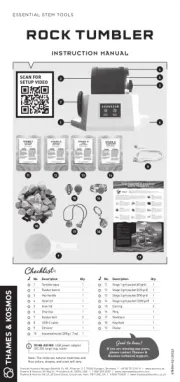
7 Oktober 2025
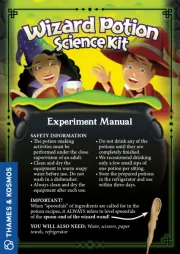
6 Augusti 2025

5 Augusti 2025
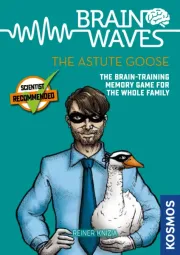
5 Augusti 2025
ej kategoriserat Manualer
- Bright Starts
- Kambrook
- LifeStraw
- Neumann
- Black Hydra
- Gigabyte
- IMG Stageline
- Snakebyte
- Zafferano
- Benchmark USA
- Tempo
- Otamatone
- Axis
- Signature Hardware
- Daikin
Nyaste ej kategoriserat Manualer

23 Oktober 2025
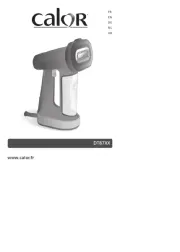
23 Oktober 2025
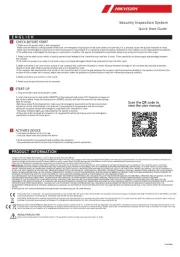
23 Oktober 2025
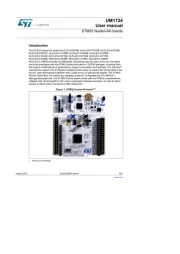
23 Oktober 2025
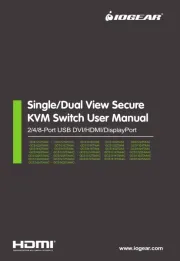
23 Oktober 2025
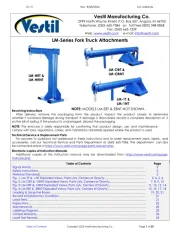
23 Oktober 2025
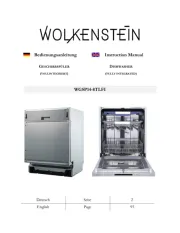
23 Oktober 2025

23 Oktober 2025
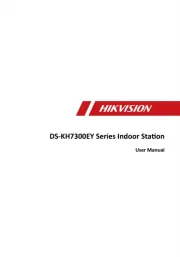
23 Oktober 2025
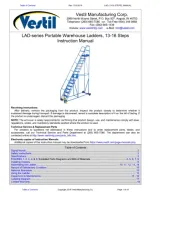
23 Oktober 2025


